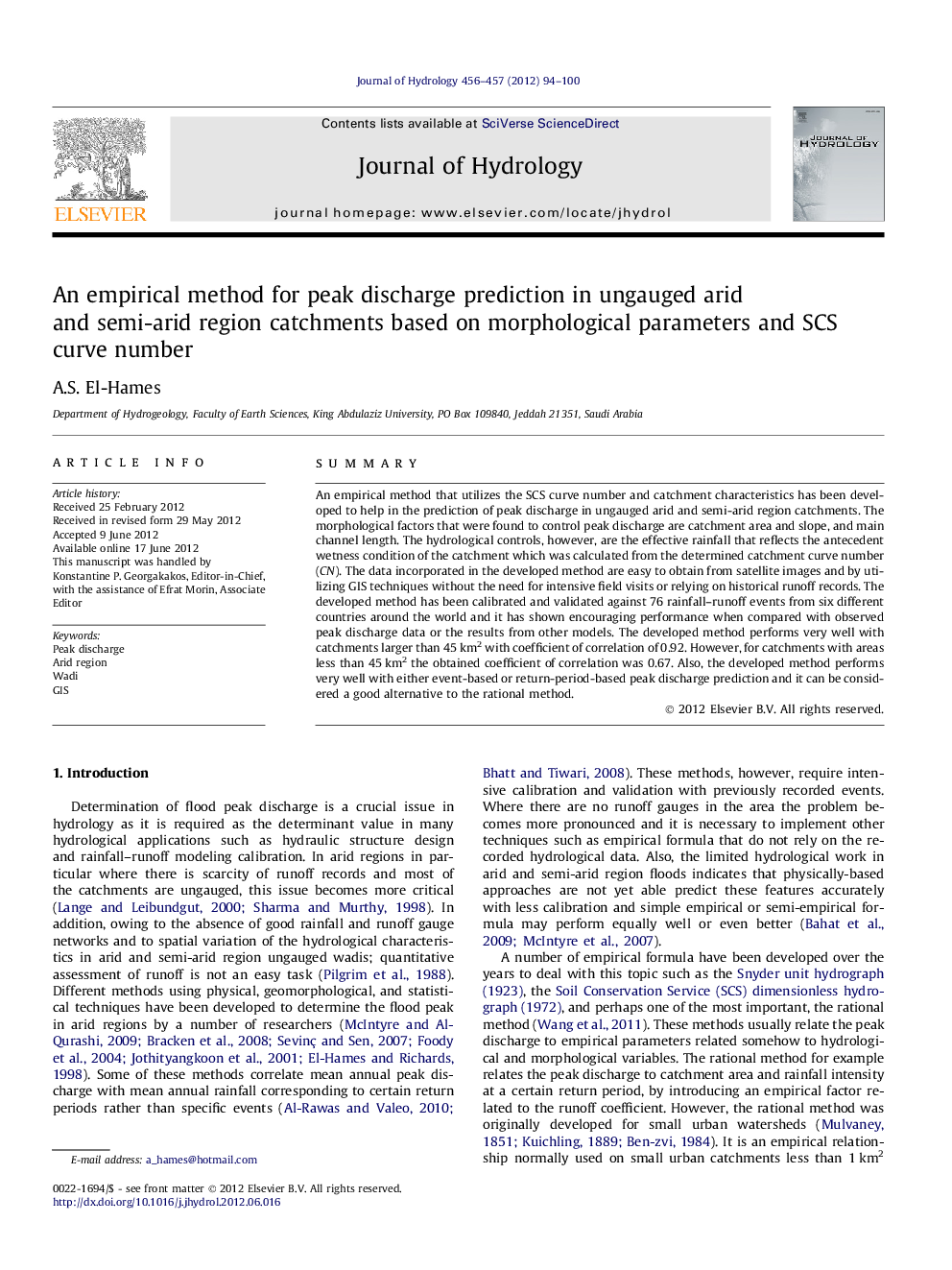| Article ID | Journal | Published Year | Pages | File Type |
|---|---|---|---|---|
| 4576872 | Journal of Hydrology | 2012 | 7 Pages |
SummaryAn empirical method that utilizes the SCS curve number and catchment characteristics has been developed to help in the prediction of peak discharge in ungauged arid and semi-arid region catchments. The morphological factors that were found to control peak discharge are catchment area and slope, and main channel length. The hydrological controls, however, are the effective rainfall that reflects the antecedent wetness condition of the catchment which was calculated from the determined catchment curve number (CN). The data incorporated in the developed method are easy to obtain from satellite images and by utilizing GIS techniques without the need for intensive field visits or relying on historical runoff records. The developed method has been calibrated and validated against 76 rainfall–runoff events from six different countries around the world and it has shown encouraging performance when compared with observed peak discharge data or the results from other models. The developed method performs very well with catchments larger than 45 km2 with coefficient of correlation of 0.92. However, for catchments with areas less than 45 km2 the obtained coefficient of correlation was 0.67. Also, the developed method performs very well with either event-based or return-period-based peak discharge prediction and it can be considered a good alternative to the rational method.
► An empirical approach is developed to determine peak discharge in arid and semi-arid region ungauged wadis. ► The method is based on catchment morphological, hydrological parameters and SCS curve number. ► This method was tested against 76 rainfall–runoff events from six countries around the world. ► The method can be used as an alternative to the rational method.
